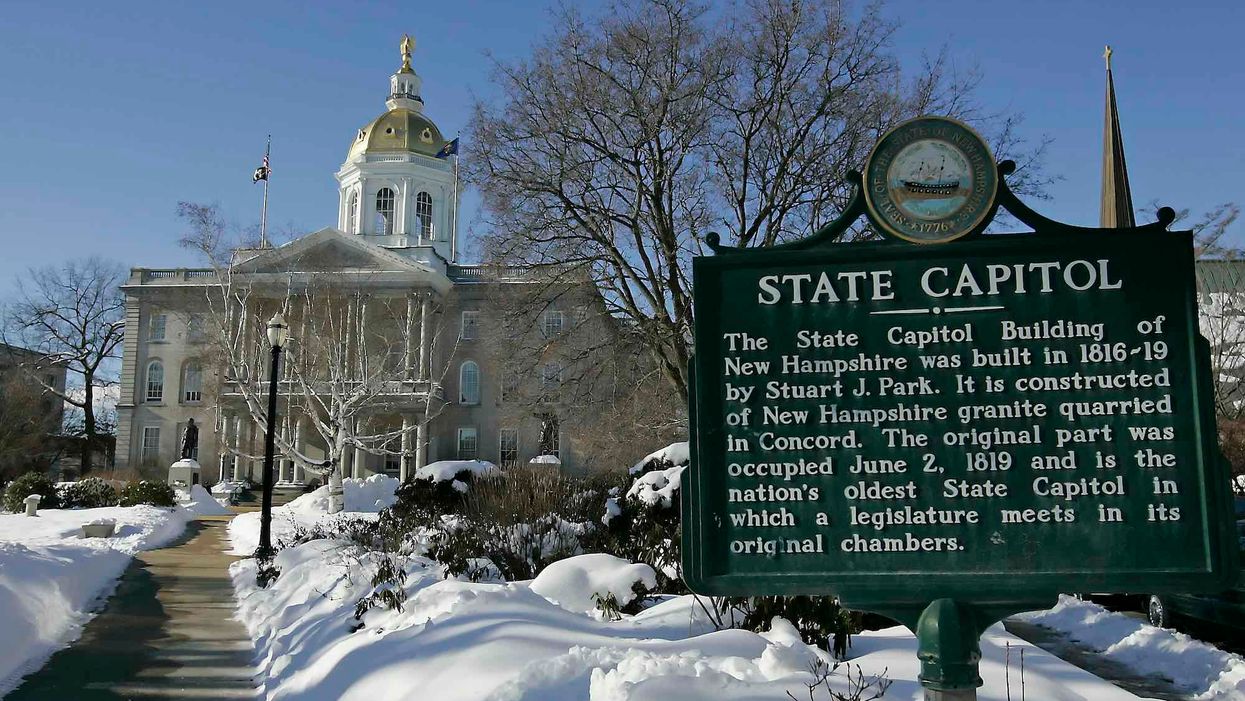
Republicans won control of both houses of the New Hampshire state Legislature on Nov. 3. (Photo by Cheryl Senter/Bloomberg via Getty Images)

GOP actually made gains
Because 2020 was a Census year, there was an increased focus on state legislatures as both parties sought control of the levers of power in states' redistricting battles.
Democrats were convinced they could flip 10 state legislative chambers in hopes of wielding more control in the upcoming redistricting fights, Fortune reported.
But they failed to flip a single house — and failed miserably.
In fact, the GOP flipped two chambers: the New Hampshire state House and Senate, the National Conference of State Legislatures reported.
With these wins it appears the Republicans will control at least 59 of the 98 partisan chambers (Nebraska has a unicameral, non-partisan Legislature). Arizona's final results have yet to be reported. Should the GOP keep control there, they would hold 61 state chambers, while the Democrats hold 37.
If that total stays as expected, the Republicans would have full control of 30 state legislatures and the Democrats would have 18.
Only Minnesota's legislature has a partisan split between the two houses: the Senate is held by the GOP and the House by Democrats.
According to Fortune, the GOP "will control both the House and Senate in 24 out of 36 states that will draw district lines for U.S. Congress, the state legislature itself, or both." Though every state has a redistricting process, some states use special commissions instead of relying on the legislature.
The NCSL called the few number of legislative chamber flips "phenomenal." On average, the organization said, 12 chambers flip party control in each general election.
"With just two chamber flips so far, it looks like 2020 will see the least party control changes on Election Day since at least 1944 when only four chambers changed hands," the NCSL said. "In the 1926 and 1928 elections, only one chamber changed hands."
Of course, having control of both houses of the legislature is a powerful tool, but it becomes more significant when the party that runs the Senate and the House also controls the governorship.
The good news for Republicans: They were able to pick up the statewide trifecta in two states.
In New Hampshire, where the GOP flipped control of both houses, the governor, Chris Sununu, is a Republican, meaning the party gained a significant leg up there.
And in Montana, where Democratic Gov. Steve Bullock was term-limited out and the GOP already controlled the legislature, Republican gubernatorial candidate Greg Gianforte handily beat Democrat Mike Cooney, flipping the governor's mansion from blue to red.
This gives the GOP complete state control in 23 states, compared to Democrats' control of 15 states, the NCSL said. In 11 states, one of the power positions (governorship, Senate, or House) is held by a different party from the other two.
This story has been updated.